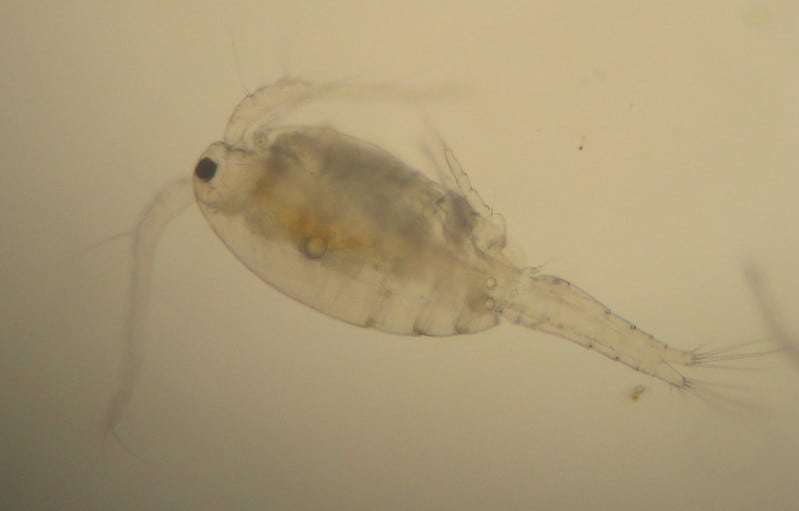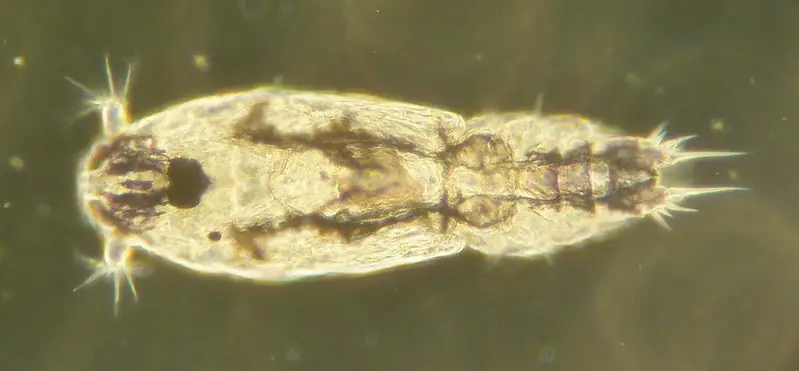Copepods are small crustaceans that live in freshwater around lakes, streams, ponds, and seawater. They usually have an oval body with a pair of appendages at the rear end called pecten, which they use to anchor themselves to vertical surfaces.
Copepods are crustaceans that feed on bacteria and algae present in water by filtering out tiny organisms from the water with their pectoral gills. Copepods belong to the phylum Arthropoda, which includes insects and spiders. They are an essential food source for other animals.
Copepods are not exactly like other arthropods since some characteristics make them unique. Here is an overview of a copepod, its common names, how many types there are, how they are used in scientific research laboratories, and more.

What is a Copepod?
A copepod is a small crustacean that belongs to the phylum Arthropoda. They have two pairs of legs, a mouth on the head, and an exoskeleton. The copepods are also known as kopepod, which means “water flea” in Estonian.
In the Baltic Sea and North Sea, there are many different types of copepods. The Baltic Sea has different species and types of copepods, while the North Sea only has one species of copepod.
Do you know how insects eat? Find out here in this article I wrote
Significance of Copepods
Copepods are small crustaceans, but they have a large worldwide impact on the planet. Copepods are important as they help clean the water by eating algae and bacteria in the water.
Algae are very important as they grow in water and produce oxygen. However, this algae growth can be harmful since it produces a lot of poison and can lead to diseases or even kill off fish and birds. The copepods are very important in cleaning up this algae by feeding on it and creating waste that is harmless to humans.
The copepod has a very important job and can impact the ecosystem greatly because of its role in cleaning up water ecosystems.
How Do Copepods Swim?
Many different types of copepods are found worldwide, with about 11500 species known. Some copepods are planktonic, meaning they live in the water column and have no permanent home. Other types live on the bottom of the water and have a burrow or shell.
Some are benthic, meaning they live on the bottom of the water. While the majority of copepods are planktonic, some species are benthic. The types of copepods found can depend on the water temperature in which they live.
In warmer waters, the copepods will be found living in the water column. However, as the water becomes colder, the copepods will migrate to the bottom of the water to find shelter.
Because the free-living copepods are so small, they are at the mercy of the water currents on the surface. They cannot control their horizontal movements, but they can maintain their vertical position in the water to keep among the phytoplankton on which they feed.
Copepods swim in a variety of ways. Cyclops is a freshwater form that used its front legs to move through the water, while some species swim by flexing and straightening their legs or bodies. With their feathery outgrowths, the large first pair of antennae prevent the animals from sinking fast, working like a parachute. The second, shorter pair of antennae are used by some species to help them swim.
How Do Copepods Feed?
Finding food Although most free-living copepods feed on microscopic plants, using the limbs around the mouth to sieve out the particles from the surrounding water is not the only feeding method.
Some species explore plants, rocks, and sand surfaces in search of food. Cyclops are believed by some scientists to be able to catch animals larger than themselves, as well as to feed on decaying matter.
Many copepods are parasitic and show various degrees of specialization. Species such as Lernaeocera are highly modified for parasitic life and are almost unrecognizable as copepods.
As adults, these animals are adapted for life on the gills or body parts of fish, where they suck the blood, causing damage to the sensitive tissue and weakening the fish.
As these copepods no longer need to lead an independent life, the parts associated with movements have degenerated. Body structures that help feed, reproduce and hold on to the fish have developed instead.
Do you know which insects live on the beach? Find out here
How Do Copepods Reproduce?
Marine free-living copepods reproduce seasonally. The male produces a small packet of sperm and attaches it to the female’s body to fertilize her eggs, often laid in one or two egg sacs.
The fertilized eggs hatch into larvae known as nauplii which are unlike their parents’ appearance. The nauplii swim around in the surface waters, feeding and molting their outer skeleton at periodic intervals.
They slowly change in form and growth as each molt helps them resemble the adult. The nauplii of many species are barely visible to the human eye.
Many freshwater copepods have to deal with drought, something that marine species don’t. They have evolved a system of producing two different types of eggs to combat the problems they face.
One type of egg quickly develops after fertilization and hatches into a new individual in less than a fortnight. The other type, often bigger than the first, often takes much longer to develop. They lie on the bottom of the pond, where they resist the cold weather and drought and do not develop until conditions are suitable again.
These eggs may be picked up by fish or birds and distributed in different places. Due to this, some copepods may appear mysteriously in pools and ponds that have been dry for some time and disappear again when the water dries up.
Parasitic marine copepods reproduce differently. Their earliest larval stage is like that of a typical free-living copepod. However, much of their larval life is attached to a secondary host: a different species of fish from the one parasitized by the parent.
Males and females eventually detach and mate during a free-moving phase, before the female attaches herself to the gills of the primary host and assumes the adult form, producing thousands of fertile eggs. In Lernaeocera, for example, the adult female is found on the cod’s gills, while both sexes of the developing larvae parasitize the flounder, again attaching themselves to the gills.
Did you know that sponges are aquatic animals? Find out more here

Why Are Copepods Essential?
The free-living marine copepods are the most important herbivores in the plankton. All life depends on sunlight for a source of energy, and in the oceans, this sunlight is harnessed by chlorophyll in the drifting planktonic plants.
This rich crop of plants, using sunlight and water-borne minerals, produces carbohydrates and protein. The copepods graze on these plants and a small volume of plankton may contain hundreds of copepods such as Calanus, which is preyed upon by fish that strain seawater for food through their gill rakers.
One species, in particular, the herring Clupea harengus feeds almost exclusively on copepods such as Calanus. This copepod is, therefore, very important in commercial fisheries. The abundance of herring from year to year depends on the numbers and nutritional value of Calanus, which in turn depends on the abundance of plant plankton.

